
Welcome to the Multiversity Year in Review for 2020! While this has been, by many accounts, a terrible year, there were a number of fantastic comics released in 2020, and over the next ten days, we’ll be highlighting our favorites across 25 categories. If you want to give your thoughts on our picks or share your own, feel free to do so in the comments!
Best Original Graphic Novel
In some circles, the distinction between comics and graphic novels is an important one, and possibly is even an indicator of the quality of the story. We know better! A graphic novel is simply a format. While a lot of comics are published in monthly floppy issues and eventually collected into paperback books, graphic novels are always intended to be books. It can be like the difference between a movie and a TV show; it’s partially a question of length, but the different format also has different storytelling concerns. 2020 was an exciting year for graphic novels, but there were ten that were our absolute favorites
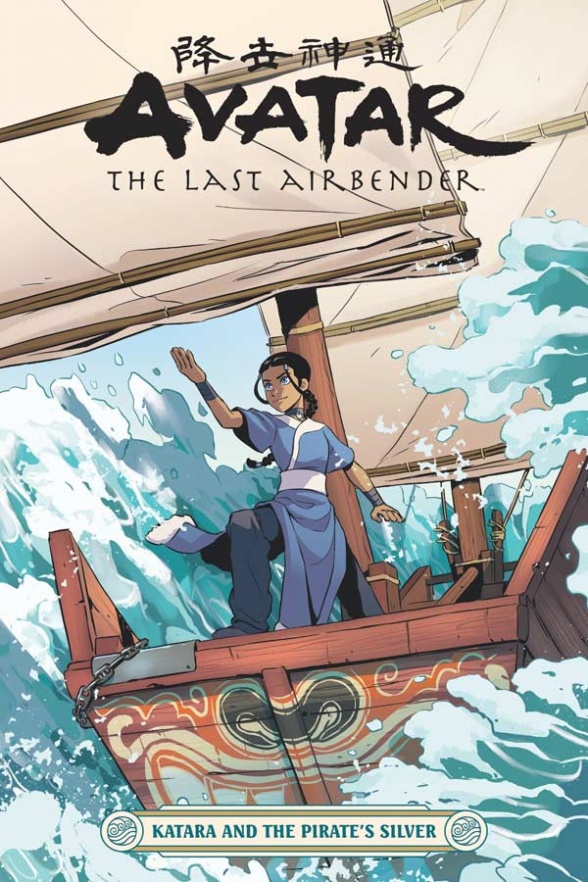
10. Avatar: The Last Airbender—Katara and the Pirate’s Silver
Dark Horse has been knocking their “Avatar” sequels out of the park for years, and 2020 was no different. Unlike previous installments, this was a done-in-one adventure set during the show’s second season, but those are refreshing changes that keep the series interesting. It also helps it appeal to potential new readers who haven’t kept up with the continuity. I can only hope the characters introduced here return in the future.
Naturally, the appeal is limited. This book was my top pick for graphic novel of the year because the art, plot, and characterization all fit so well with the TV show that I’ve adored for years. If I’m being honest, though, this isn’t a good introduction the “Avatar” universe. Not even close. Neither characters nor their abilities are introduced. Toph’s blindness, for example, is never mentioned. This weakness probably explains why the book doesn’t rank higher.
If you’re a fan of the show, however, you’ll love every page of “Katara and the Pirate’s Silver” (and all the other “Avatar” books from Dark Horse). If you’re not a fan of the show yet, find an hour to watch the first three episodes and see what you’ve been missing. -Drew Bradley
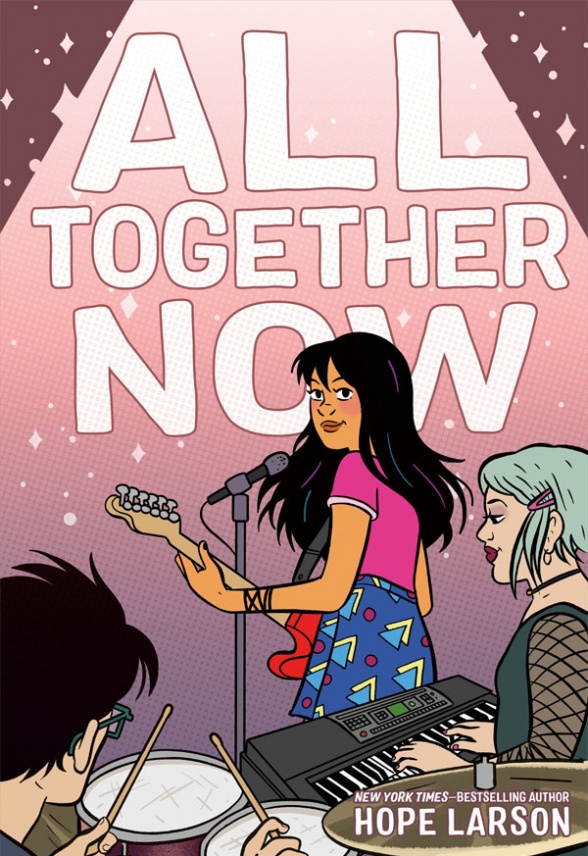
9. All Together Now
There is nothing easy about growing up, even in the best of circumstances. “All Together Now,” the second installment in Hope Larson’s ‘Eagle Rock’ series, is a fantastic examination of what happens when you think you get what you want. Bina wants to form a band – and does! – but it isn’t what she hoped it would be. Austin, her best friend, breaks up with his girlfriend and starts showing Bina attention in a new way, but she just doesn’t feel the same way, even if she wants to. Life is hard, even when fate seems to be dealing you all the right cards.
Larson does a fantastic job in creating the Eagle Rock community; we see the world through her lens, but Larson wants us to also see certain things for what they really are. I’m not sure if a middle schooler, reading about another middle schooler, would see just how great Bina’s parents are, or just how petty some of the squabbles are. Those are never played up, but are a shadow of the action that allows a deeper reading of the text.
More than anything else, “All Together Now” succeeds because it is allowing us, from a safe distance, to watch someone figure out who they are. It is always thrilling to see people assemble their lives in their ideal way, before compromise and bad luck muck up the works. Bina’s life is being built brick by brick, and we can wish, hopelessly, that she can get through unscathed. -Brian Salvatore

8. Jack Kirby: The Epic Life of the King of Comics
What’s better than a comic book about comic books? How about a comic book about the King of Comics!? Jack Kirby remains a favorite of modern comic fans not just because of his talent (which is power level: incalculable) but also because of his life story. From his early struggle to survive in New York during the depression to his presence on Omaha Beach, Kirby’s life was already full of tragedy and adventure before he went on to create hundreds of beloved characters.
Continued belowThe obvious way to draw a Kirby biography is by emulating Kirby’s famous style. Tom Scioli does not do that- at least not exactly. Scioli is famous for the ways in which his art emulates Kirby’s but in this graphic novel, what’s more notable is the ways in which they are different. Scioli has access to modern techniques, particularly a vast range of coloring options Kirby couldn’t have even imagined. But what Scioli really captures is the larger than life quality of Kirby’s stories. A character in a Kirby comic doesn’t just a feel a feeling, the feel the ultimate manifestation of that feeling. And by lending that heightened tone to the real guy, Scioli teaches you something that may not have been clear from a prose book. Jack Kirby wasn’t just a man of enormous talents, but a man with huge feelings. Only someone as sensitive and talented as Tom Scioli could have conveyed the turmoil of the King so well. -Jake Hill
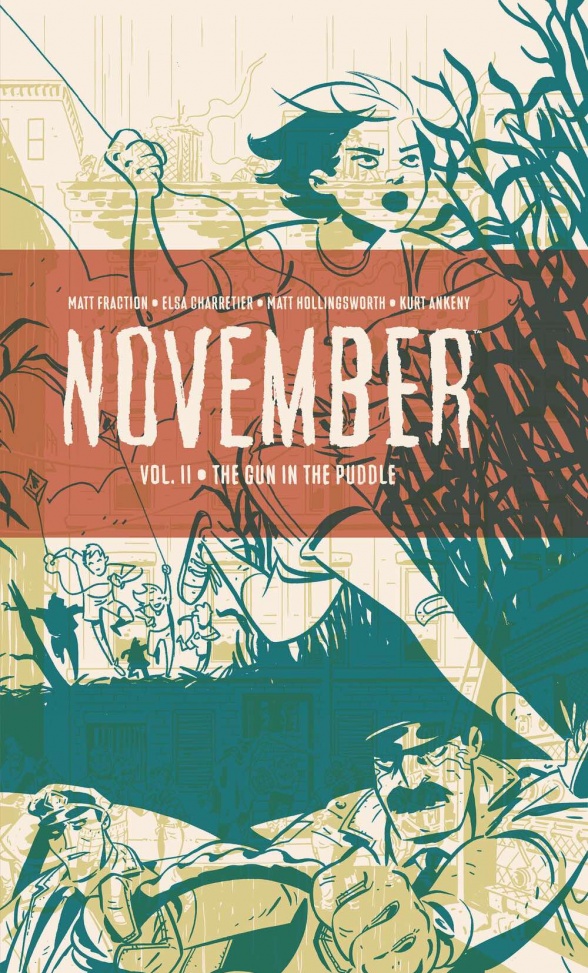
7 (tie). November Vol. 2 + Vol. 3
“November” saw second and third volumes of its four-volume run released this year, with both of them receiving critical acclaim. So, which one do we recommend as our seventh-best original graphic novel of the year? The answer is easy – both!
While both volumes provide a compelling story, they are clearly designed as continuations of the grand story of “November”. Reading them out of order or only reading one of them diminishes the value of the narrative flowing throughout the series. If you’re going to read any of “November”, you should read all of it, starting from the first volume.
With each successive volume of “November”, the creative team is pushing themselves and the medium forward. Fraction gives a masterclass in how to tell a story across multiple protagonists and perspectives. Charretier delivers ever more complex renderings of the characters and setting. Hollingsworth shows the power of a limited color palette. Ankeny’s handwritten letters give the narration and dialogue a feel that is entirely unique to “November”. Each member of the creative team is delivering top-quality work, resulting in one of the freshest examples of a graphic novel series ever produced.
“November” is one of the most well-realized singular visions released this year, and easily deserves a place among the top graphic novels of 2020. – Jodi Odgers

6. Shadow of the Batgirl
Writer Sarah Kuhn gets what makes Cassandra Cain tick. She’s a girl who has trouble seeing herself as a hero, and has to fight against other people’s definitions of who she ought to be. A stripped down version of Cass’s origins, “Shadow of the Batgirl” is a meditation on imposter syndrome, and on the feeling that everyone else understands what’s going on and you’re the only one in the dark. It’s also just a hell of a lot of fun.
This is a gorgeous book, with kinetic cartooning from Nicole Goux and vibrant colors from Cris Peter offer a vision of Gotham that’s both softer and more alive than the grim and gritty urban warzone we usually see. There’s romance and found families in there, as well—this is a YA graphic novel, after all—but the tropes never feel perfunctory. The supporting cast is rooted in Cass’s identity, from Erik, her mixed race romantic interest who similarly tries to push against the expectations others have for him, to Jackie, the kind Japanese American woman who is just as ready to help a dumpster diver as she is to fight for what she loves, to her mentor Barbara Gordon, who sees Cass for the incredible person she is.
“Shadow of the Batgirl” digs into Cassandra’s simultaneous defiance and embrace of legacy. It takes place mostly in the Gotham City Public Library and Jackie’s noodle shop. We never see the Batcave—and we never see Batman. “Shadow of the Batgirl” is better for the absence of Bruce Wayne—this is Cass’s story, and it’s not the story of her convincing the heroes that she is worthy of wearing the cowl. This is a story of Cass learning how to believe that about herself. -Reid Carter

5. Fire Power: Prelude
If there’s someone who is trying to innovate the most in the comics business, it is Robert Kirkman. In 2018 he surprise-launched “DieDieDie!,” and in 2019 he surprise-cancelled “The Walking Dead.” This year he had a bombastic idea: put out the first volume of a comic and make the first issue free, so when you came into the shop you would had around 8 issues of content of a new series ready to read. Sadly, the pandemic messed up the plan, but we did get “Fire Power: Prelude,” and let me tell you, it is gorgeous.
Continued belowRobert Kirkman, Chris Samnee, Matt Wilson & Rus Wooton, are not reinventing the wheel here, it is the story of an American learning mystical martial arts in a Chinese temple, but it has distinctive elements: a Chinese-American main character, a westernized monk who uses an iPod and is a sneakerhead, and the start of love story in the backdrop of a threat.
Of course, Kirkman Is more than capable, and his work here is great, with snarky comments and philosophical comebacks it is a fun read. I have seen writers struggle with how the story is told when they leave their regular 22-page composition, but that is not the case here, the whole book is a continuous, well-structured tale.
But what shines here is the beautiful art from Samnee and colors from Wilson, from the first ten silent pages in the mountain, passing through all the action in the temple, to the final pages in a suburban house, his drawings are near perfect and very well might be the finest work we have ever seen from him. So, go get it and don’t worry about waiting for the next issue because there are 6 issues out already. -Ramon Piña
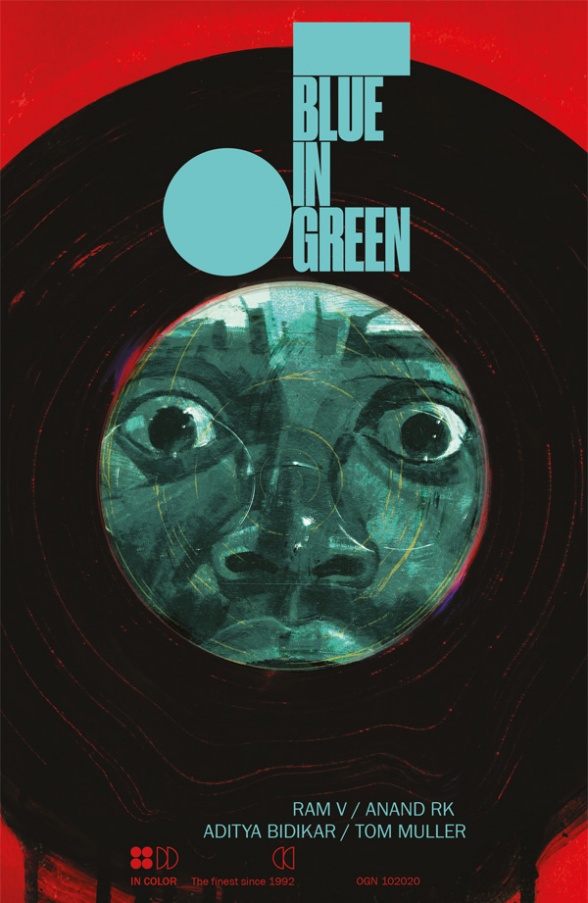
4. Blue In Green
Ram V and Anand RK’s musical horror graphic novel is one of the most original comics of the year, and the story is both esoteric and beautifully simple. There’s a lot of good craft that goes into this visual marvel, and Pearson’s color work in “Blue In Green” is extraordinary. It’s tough work to lay down color over Radhakrishnan’s extremely detailed inks but Pearson doesn’t just maintain an aesthetic. Instead, the book’s elevated by its sepia inks, moody neon washes and intricate watercolor layering. Bidikar’s lettering is spiky, bespoke and yes, readable. There’s tons of style here without cutting down on the substance of good, solid lettering, and the final book is a visual feast thanks to a seamless, expert creative team.
Aside from stunning visuals and a fine finish, Ram V tells one heck of a horror story. We’re familiar with the “Devil at the crossroads” kind of narrative, but Erik Dieter’s jazz experience is something a little different. There’s something here for everyone, music lover or no, and this might be a good one to gift someone in your life who might be interested in comics but not quite sure where to start. Put another way, “Blue In Green” takes risks that pay off in a big way, and it’s a fine example of what exceptional graphic storytelling can do. -Christa Harader
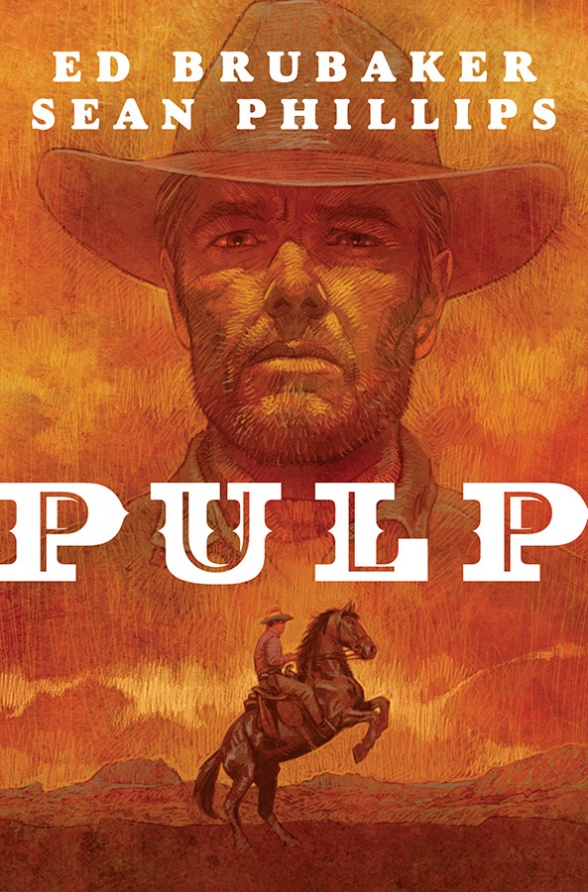
3. Pulp
There are a handful of creative teams that can pretty much get me to read anything they put out, whether or not it is a genre or subject matter that typically holds my interest. Ed Brubaker and Sean Phillips are definitely one of those teams, and “Pulp” is exactly the kind of original graphic novel that I would normally skip, or at the very least, read up on before purchasing. Telling the story of a pulp writer during the Great Depression, who has ties to thieving highwaymen of the Old West, this book sews two very different stories together in a way that is comes down to a simple execution, but the strength in the storytelling is what elevates this to something grand.
Writer Max Winter uses pulp magazine stories to re-tell his days as a gunslinger. Brubaker tells this dual story by taking us back and forth through time give us two very different Max Winters. One is barely scraping by, writing as much as he can, making his way through life in one of the most difficult eras in American history. The other is a confident train robber and cowboy living an exciting life dispensing justice as he sees fit. As Max’s present begins to mirror his past, he has some big decisions to make regarding the rest of his life. The script comes so naturally that it is one of those rare comics that exhibits both a heighted reality and feels like it could be telling a true story.
Sean Phillips’s art gives us the cold and unforgiving February of 1939, and the dusty hot Mid-West of the 1800s. The natural nature of Brubaker’s script merging with the autobiographical adventures of Max Winters allows for two distinct art styles from Phillips. Although it gives us two incredibly different art designs, the plot flows seamlessly.
Continued below“Pulp” is exciting, heart-breaking, and powerful – it finds its way into your very being and forces you to be saturated by it. There is no denying it to be one of the best original graphic novels of 2020. A must read. -Chris Egan

2. Dracula Motherf**ker
I voraciously read all of “Dracula Motherf**cker” while standing in a socially distanced line at the store. Then I drove home and read the entire thing again. It’s not long. But it’s dense with images and words. I can only speculate on how circumstances changed what this book ended up looking like, but as it stands it’s a tour de force for the talents of Alex de Campi and Erica Henderson. And it’s exactly the kind of thing you hope to see from them all the time. It’s not a retelling of Dracula but rather a sensual story of their own design. Henderson takes all the artistic ideas she’s been playing with for the last few years and channels them all into a fine point. All the zaniness and anarchy is barely contained in these pages, and while the art threatens to spin out of control, it never does.
That’s probably got at least a little to do with de Campi, who is the very model of control. Her writing is sparse here, never using more words than she needs. You almost get the feeling that she is bored with word balloons, as a lot of the text spills out into the art itself. Comics are an inherently collaborative medium, and there’s nothing better than seeing a good team bolster each other’s strengths and weaknesses. “Dracula Motherf**cker” is the kind of stylish one-and-done graphic novels that you should be gifting to your coolest friends. -Jake Hill

1. Slaughter-House Five
Purely in terms of adapting a story from one medium to another, Ryan North and Albert Monteys’ graphic novel adaption of Kurt Vonnegut’s prose novel “Slaughterhouse-Five” is a tremendous success. There’s a laundry list of things that can go wrong with adaptations, but one that most often seems to trip them up is when a story is adapted literally in terms of plot beats without engaging with the meaning behind everything. This pitfall isn’t just one North and Monteys avoid, but one they avoid so deftly it’s the OGN’s greatest strength. They’ve broken Vonnegut’s novel down to its raw components, then completely reassembled it from scratch. It makes for an extremely different reading experience than the source material, while also feeling incredibly faithful to its purpose and meaning.
“Slaughterhouse-Five” is a non-linear story by design―entire plot threads deconstruct and explore our understanding of endings, beginnings, everything in between, and the way we derive meaning from their order. North and Monteys take this idea and run with it, literally showing the beginning and ending of the prose novel in the opening sequence of the OGN. The flow of information is completely upended so that this version of “Slaughterhouse-Five” could only be a comic.
Just as the Tralfamadorians have a different perspective on time and the flow of cause and effect, so too does “Slaughterhouse-Five” have a different perspective on characters and their stories. In the OGN, we’re introduced to Billy Pilgrim with a double-page spread, showing his life from birth to death (So it goes), just as the Tralfamadorians would see him. Visual juxtaposition is baked into comics, whereas prose has to paint these ideas in our head one image at a time. So in the OGN, when we turn the page we see all of Billy throughout his entire timeline at once, experiencing the feeling of Billy’s timeline before we process it in terms of the specific information it details. This is the same story, but with an entirely different entry structure to its core ideas, where experience and understanding are often reversed to give us new insights into the same material.
Like the best adaptations, the “Slaughterhouse-Five” OGN stands alone while also being complementary to the original work. It is not meant to function as a substitute for Vonnegut’s novel, but rather one that rewards reading both, and even rereading both. The two nourish each other. North and Monteys’ “Slaughterhouse-Five” is more than just an excellent adaptation to comics; it’s the gold standard. ―Mark Tweedale






